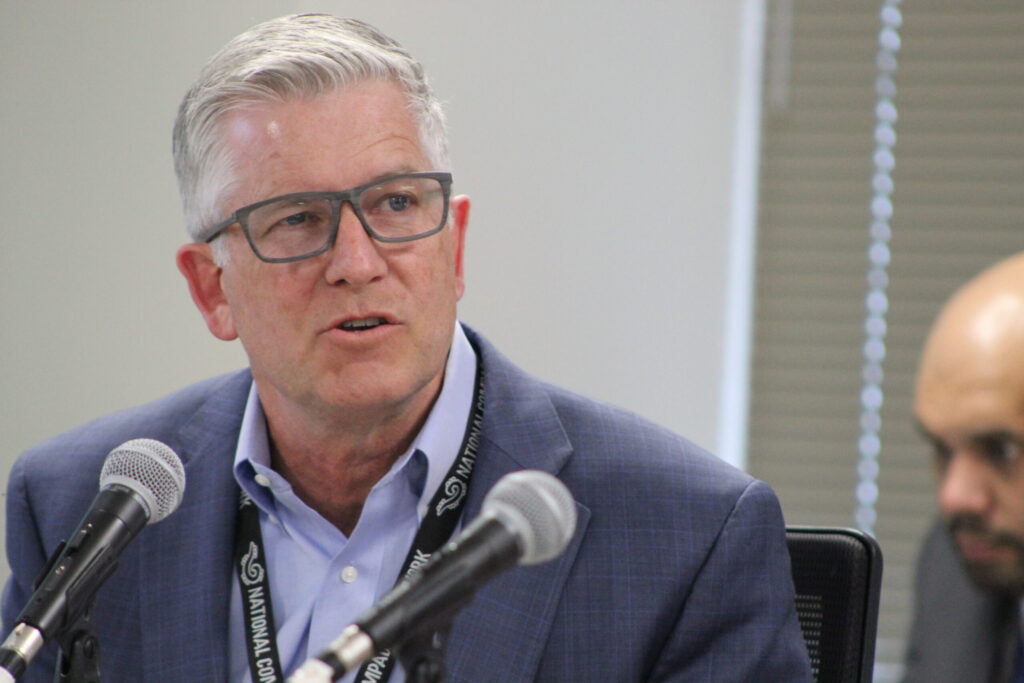Non-management isn’t land management | GABEL

Rachel Gabel
Never has there been a presidential administration as focused on conservation as the Biden administration. I don’t support the administration’s flagrant use of monument designations, their decisions about public land management — like those in progress in Wyoming’s Rock Springs Management Area — or the final rule just released by the Bureau of Land Management that foolishly defines conservation as a multiple use. However, in the shadow of these seemingly conservation-centric decisions, the proposed conservation cuts in the Farm Bill are puzzling.
Reaching a new Farm Bill agreement has been a long and tedious process and there are potential cuts to conservation programs that could cost Colorado agriculture producers nearly $230 million in the process of cutting $20 billion of conservation funds made available for Department of Agriculture (USDA) conservation funds. This is far from the only threat bearing down on Colorado ag producers. The list includes high input costs, widely varying commodity costs, land availability, land loss due to urban sprawl, always unpredictable weather, an aging producer population, damaging legislation and plenty of terrible decisions made by those without skin in the proverbial game.
In a time of focus on conservation, best practices, best available tools and technologies, ag producers are embracing and continuing the conservation practices touted as sustainable, though I argue ag operations that have been successfully operated for generations are the very definition of sustainable.
Stay up to speed: Sign up for daily opinion in your inbox Monday-Friday
As mentioned previously, the BLM announced a final rule the agency claims will “guide balanced management” of public lands. Public lands are multiple use, meaning they are to be managed according to the Federal Land Policy and Management Act of 1976 (FLPMA), by balancing recreation, mining, energy, timber and grazing, even if the use or uses in question are less palatable to the extremist types.
According to National Cattlemen’s Beef Association president, Wyoming rancher Mark Eisele, these changes to the leasing structure for federal lands without authorization of direction from Congress defies the BLM’s statutory responsibility to ensure multiple use on public lands.
Just like farmers who have been in the business of feeding their neighbors for generations, ranchers are stewards of lands and animals and are the original conservationists. Sensible land management doesn’t include erasing the very real conservation value of grazing nor does it include removing land from all uses in the name of conservation.
In Wyoming, the Rock Springs Resource Management Plan has been in development for 12 years and carries, so far, a $9 million price tag. The BLM threw aside 12 years of stakeholder input from the governor’s office to the ground, and issued the agency’s preferred alternative, which was as far from sensible as one can get. With no stakeholder engagement prior to the announcement since 2020, the BLM surprised Wyoming Gov. Mark Gordon, local residents, state and local leadership and the communities that depend upon all of the multiple uses made possible by the proper management of the 3.6 million acres of public lands in the area. The alternative closes the gates to energy, agriculture, and recreation.
The alternative proposed by the BLM in the Rock Springs Resource Management Plan increases the Areas of Critical Environmental Concern (ACEC) by more than 1.3 million acres. As if on cue, the final rule released by the BLM on “Conservation and Landscape Health” depends upon ACECs to determine which lands can be ripped from the hands of Americans. Anyone can nominate land to be designated as an ACEC, coincidentally. It’s great news for extremists who hate economic and beneficial activities like mining, energy and grazing, as many decisions from this administration tend to be.
According to NCBA and the Public Lands Council, who put a sharp pencil to paper, federal rangelands generate more than $3 billion annually in ecosystem services, which amounts to more than $20 per public acre of land grazed by cattle or sheep. If appropriated tax dollars and grazing fees paid by ranchers are added, the net return is more than $19 on each grazed acre. Ecosystem services provided by grazing are nothing to sneeze at and include wildfire mitigation, reduction of invasive species, carbon sequestration, improved wildlife habitat and preservation of open green space for recreation. The $2.1 billion in economic output attributable to livestock grazing is more than simply lagniappe.
There’s nothing sensible about land management via non-management.
Rachel Gabel writes about agriculture and rural issues. She is assistant editor of The Fence Post Magazine, the region’s preeminent agriculture publication. Gabel is a daughter of the state’s oil and gas industry and a member of one of the state’s 12,000 cattle-raising families, and she has authored children’s books used in hundreds of classrooms to teach students about agriculture.










